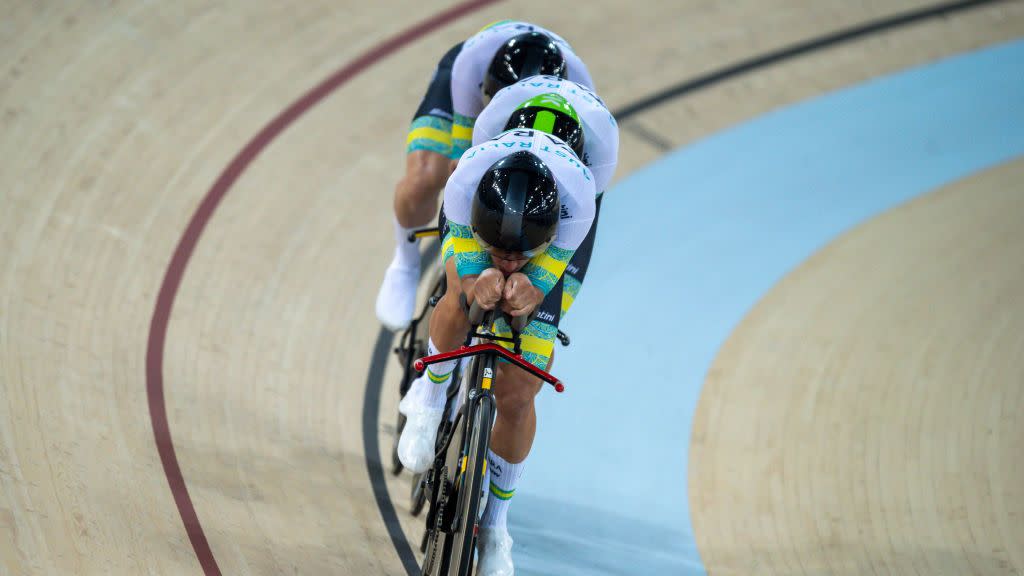A $60K Bike Made for the Paris Olympics Raises Questions About Fairness and Equipment Regulation

As we get closer to the 2024 Olympic Games in Paris this summer, we’re getting more glimpses of the equipment the various cycling teams will be using. Most recently, the Australian track cycling team announced that they will be riding the Factor Hanzo track bike, currently available on the British brand’s website for $97,979 (Australian Dollars). That translates to right around $60,000 U.S. dollars.
According to GCN, “The bike has already been around for a couple of months, having officially been unveiled in Adelaide in January at the Tour Down Under on the same day that Factor and AusCycling announced their partnership.”
But, why even attach a dollar amount to such a machine? UCI regulations (article 1.3.006) state that all equipment used during the Olympics must be commercially available. The rule specifically states that “the entire used material must be accessible to all participants. All the components must be available commercially (i.e., available on the market or sold directly by the manufacturer) at the latest twelve months after their first use in competition.”
Fairness and equipment regulation
The goal of the UCI article is to make things more fair, as technically, anyone can show up with the same equipment as anyone else—as long as they have a significant bike fund. The rule goes on to say, “The use of equipment specially designed for a particular athlete, event, or performance is prohibited. ‘Specially designed’ means a bicycle with a technical added value when compared with other equipment.”
In other words, athletes can’t win a competition because they have bikes specially designed for them, in theory. But when Factor releases a bike with a price tag surpassing most high-end vehicles, it certainly seems to make light of the rules. This kind of pricing strategy for Olympic equipment seems designed to comply with the letter of the law while totally circumventing its intended purpose.
The rule also does not specify a delivery timeline or if the brand is required to make enough to satisfy demand. It simply stipulates that the bikes must be available to buy. The brands aren’t responsible for exorbitant lead times or not having enough stock to meet demand. This creates a situation where, yes, there is a rule to curb the technological advantage of larger federations with big R&D budgets. But the reality is that the rule is laughably easy to circumvent, and there isn’t an obvious path to fix it.
Other pricey bikes we’ll see at the Olympics
Amazingly, the Factor Hanzo won’t even be the most expensive bike on the track in Paris. GCN reported that “Great Britain’s UKSI-BC1 bike, which is 3D printed and was released in November, costs £55,000, which is roughly $106,000 (AUD).”
In the U.S., that’s almost $70,000; more than a fully-loaded 2024 BMW 5 Series.
And then, there is Canyon’s Speedmax CFR Track, the TT bike of choice for Team USA which had its debut at the 2023 UCI World Championships in Glasgow. It is priced at $2o,000 USD, which seems modest compared to the Hanzo andGreat Britain’s UKSI-BC1 bike.
Factor doesn’t say much about what makes their track bike so expensive, but it was specifically designed for the pursuit disciplines, which include the team and individual pursuit. The track cycling events take place from August 5-11, 2024.
You Might Also Like

